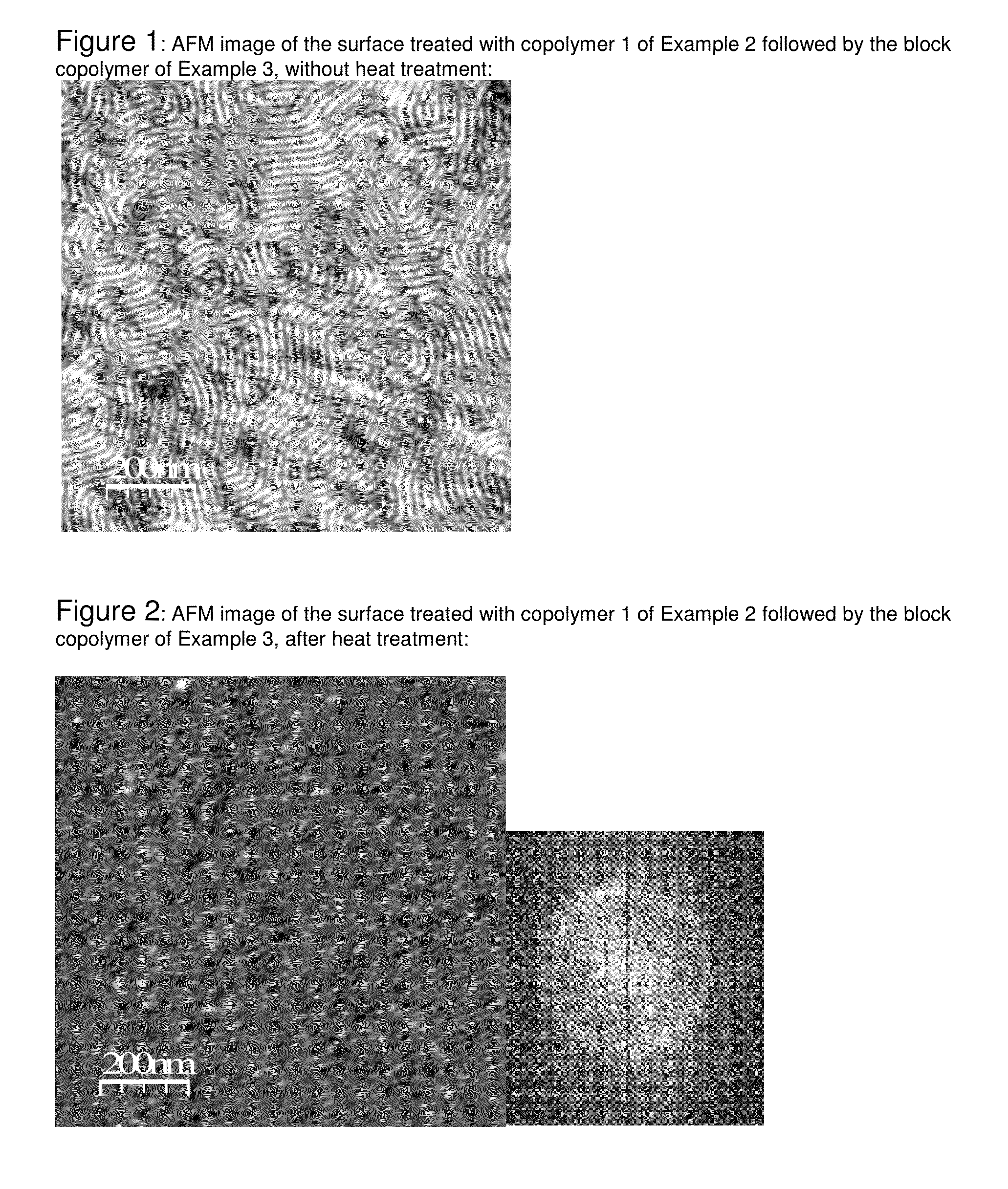Method for the perpendicular orientation of nanodomains of block copolymers, using statistical or gradient copolymers, the monomers of which differ at least in part from those present in each of the blocks of the block copolymer
a technology of block copolymer and nanodomain, applied in the field of perpendicular orientation of block copolymer nanodomains, can solve the problems of poor etching mask, limited mask final resolution, and inability to achieve optimal transfer of patterns to the substra
- Summary
- Abstract
- Description
- Claims
- Application Information
AI Technical Summary
Benefits of technology
Problems solved by technology
Method used
Image
Examples
example 1
Preparation of a Hydroxy-Functionalized Alkoxyamine Starting with the Commercial Alkoxyamine BlocBuilder®MA
[0058]The following are introduced into a 1 L round-bottomed flask purged with nitrogen:[0059]226.17 g of BlocBuilder®MA (1 equivalent)[0060]68.9 g of 2-hydroxyethyl acrylate (1 equivalent)[0061]548 g of isopropanol.
[0062]The reaction mixture is refluxed (80° C.) for 4 hours and the isopropanol is then evaporated off under vacuum. 297 g of hydroxy-functionalized alkoxyamine are obtained in the form of a very viscous yellow oil.
example 2
[0063]Experimental protocol for preparing polystyrene / polymethyl methacrylate polymers, starting with the hydroxy-functionalized alkoxyamine prepared according to Example 1.
[0064]Toluene and monomers such as styrene (S), methyl methacrylate (MMA) and the hydroxy-functionalized alkoxyamine are placed in a stainless-steel reactor equipped with a mechanical stirrer and a jacket. The mass ratios between the various monomers styrene (S) and methyl methacrylate (MMA) are described in table 1. The mass amount of toluene fed in is set at 30% relative to the reaction medium. The reaction mixture is stirred and degassed by sparging with nitrogen at room temperature for 30 minutes.
[0065]The temperature of the reaction medium is then brought to 115° C. Time t=0 is started at room temperature. The temperature is maintained at 115° C. throughout the polymerization until a monomer conversion of about 70% is achieved. Samples are taken at regular intervals in order to determine the polymerization k...
example 3
Synthesis of the PLA-PDMS-PLA Triblock Copolymer
[0069]The products used for this synthesis are an HO-PDMS-OH initiator and homopolymer sold by Sigma-Aldrich, a racemic lactic acid, so as to avoid any crystallization-related problem, an organic catalyst to avoid the problems of metal contamination, triazabicyclodecene (TBD) and toluene.
[0070]The volume fractions of the blocks were determined to obtain PLA cylinders in a PDMS matrix, i.e. about 70% PDMS and 30% PLA.
PUM
| Property | Measurement | Unit |
|---|---|---|
| thickness | aaaaa | aaaaa |
| domain sizes | aaaaa | aaaaa |
| domain sizes | aaaaa | aaaaa |
Abstract
Description
Claims
Application Information
 Login to View More
Login to View More - R&D
- Intellectual Property
- Life Sciences
- Materials
- Tech Scout
- Unparalleled Data Quality
- Higher Quality Content
- 60% Fewer Hallucinations
Browse by: Latest US Patents, China's latest patents, Technical Efficacy Thesaurus, Application Domain, Technology Topic, Popular Technical Reports.
© 2025 PatSnap. All rights reserved.Legal|Privacy policy|Modern Slavery Act Transparency Statement|Sitemap|About US| Contact US: help@patsnap.com



